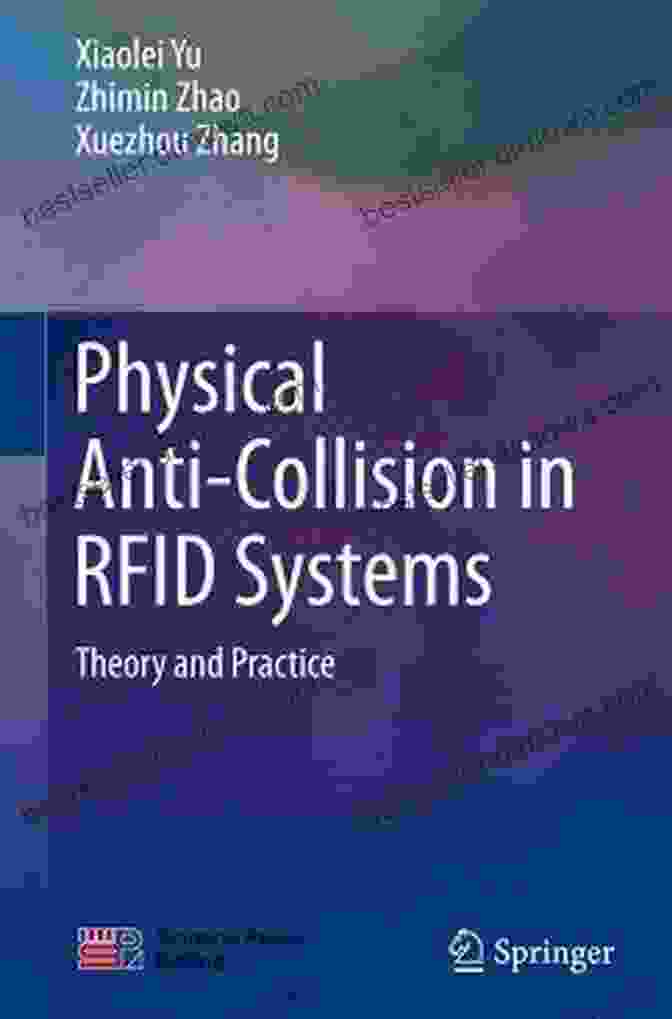Physical Anti-Collision in RFID Systems: A Comprehensive Guide to Unlocking Seamless Operation

Radio Frequency Identification (RFID) technology has revolutionized various industries, offering a wide range of applications, from inventory management and supply chain optimization to access control and asset tracking. However, one of the key challenges in RFID systems is the occurrence of tag collisions, which can significantly impact system performance and reliability.
RFID tag collisions occur when multiple tags respond to a reader's interrogation signal simultaneously, resulting in data loss or corruption. This is particularly problematic in environments where numerous RFID tags are present within a relatively small area, such as warehouses, retail stores, or manufacturing facilities.
4.3 out of 5
| Language | : | English |
| File size | : | 39905 KB |
| Text-to-Speech | : | Enabled |
| Enhanced typesetting | : | Enabled |
| Word Wise | : | Enabled |
| Print length | : | 413 pages |
| Screen Reader | : | Supported |
Understanding the Causes of RFID Tag Collisions
To effectively address RFID tag collisions, it is essential to understand the underlying causes. These include:
- Close Proximity of Tags: When RFID tags are located too close to each other, their signals can overlap, leading to collisions.
- Interference from Other Signals: RFID systems operate within specific frequency bands. However, other electronic devices, such as Wi-Fi routers or Bluetooth transmitters, can generate interference that can disrupt RFID signals.
- Limited Reader Power: RFID readers have a limited transmission power. If tags are located too far from the reader or obstructed by obstacles, their signals may not reach the reader, resulting in collisions.
Physical Anti-Collision Techniques
Physical anti-collision techniques aim to reduce or eliminate tag collisions by employing physical methods to control the transmission of RFID signals. These techniques include:
1. Spatial Separation
Spatial separation involves physically separating RFID tags to minimize signal overlap. This can be achieved through the use of:
- Spacing Tags: Tags are placed at a certain distance from each other to ensure that their signals do not interfere.
- Using Directional Antennas: Directional antennas focus RFID signals in a specific direction, reducing the likelihood of collisions.
2. Time Division Multiple Access (TDMA)
TDMA allocates specific time slots for each RFID tag to transmit its signal. This ensures that only one tag is transmitting at any given time, eliminating collisions.
3. Frequency Hopping Spread Spectrum (FHSS)
FHSS spreads the RFID signal across multiple frequencies, reducing the chance of interference from other signals. This technique is particularly effective in environments with high levels of signal interference.
4. Code Division Multiple Access (CDMA)
CDMA assigns unique codes to each RFID tag. These codes are spread across the entire frequency band, allowing multiple tags to transmit simultaneously without causing collisions.
Choosing the Right Anti-Collision Technique
The choice of the most suitable anti-collision technique depends on various factors, including:
- Number of Tags: The number of tags in the system determines the level of anti-collision required.
- Environment: The physical environment, including obstacles and signal interference, can impact the effectiveness of different techniques.
- Cost: Different anti-collision techniques vary in cost and complexity.
Optimizing RFID Systems for Collision Avoidance
In addition to physical anti-collision techniques, several other measures can be taken to optimize RFID systems for collision avoidance:
- Use High-Performance RFID Readers: Invest in RFID readers with high sensitivity and low error rates.
- Calibrate Readers Regularly: Regular calibration ensures that readers are operating at optimal performance.
- Configure Reader Settings Appropriately: Adjust reader settings, such as power output and interrogation interval, to minimize collisions.
- Implement Collision Avoidance Algorithms: Utilize software algorithms that detect and resolve collisions in real-time.
Physical anti-collision techniques are essential for ensuring reliable and efficient operation of RFID systems. By understanding the causes of tag collisions and implementing appropriate anti-collision measures, businesses can harness the full potential of RFID technology to streamline operations, improve accuracy, and enhance productivity.
Whether you are a seasoned RFID professional or just starting to explore the benefits of RFID, this comprehensive guide provides valuable insights and practical strategies to optimize your RFID systems for collision avoidance. By embracing these techniques, you can unlock the full potential of RFID technology and achieve seamless, reliable operation in even the most challenging environments.

Additional Resources:
- RFID Anti-Collision Techniques
- Anti-Collision in RFID Systems
- How to Resolve RFID Tag Collisions
4.3 out of 5
| Language | : | English |
| File size | : | 39905 KB |
| Text-to-Speech | : | Enabled |
| Enhanced typesetting | : | Enabled |
| Word Wise | : | Enabled |
| Print length | : | 413 pages |
| Screen Reader | : | Supported |
Do you want to contribute by writing guest posts on this blog?
Please contact us and send us a resume of previous articles that you have written.
 Book
Book Novel
Novel Page
Page Chapter
Chapter Text
Text Story
Story Genre
Genre Reader
Reader Library
Library Paperback
Paperback E-book
E-book Magazine
Magazine Newspaper
Newspaper Paragraph
Paragraph Sentence
Sentence Bookmark
Bookmark Shelf
Shelf Glossary
Glossary Bibliography
Bibliography Foreword
Foreword Preface
Preface Synopsis
Synopsis Annotation
Annotation Footnote
Footnote Manuscript
Manuscript Scroll
Scroll Codex
Codex Tome
Tome Bestseller
Bestseller Classics
Classics Library card
Library card Narrative
Narrative Biography
Biography Autobiography
Autobiography Memoir
Memoir Reference
Reference Encyclopedia
Encyclopedia Michael Northrop
Michael Northrop Barry Wolverton
Barry Wolverton Henryk Sienkiewicz
Henryk Sienkiewicz Beth Inman
Beth Inman Christine Kerr
Christine Kerr Beth Ain
Beth Ain Benjamin Fine
Benjamin Fine Becky Albertalli
Becky Albertalli J Gary Laine
J Gary Laine Bob Gibbons
Bob Gibbons L Brandon Magoni
L Brandon Magoni Will Benner
Will Benner Bill Carreira
Bill Carreira Bayard Taylor
Bayard Taylor Jay Jaffe
Jay Jaffe Ben Jonson
Ben Jonson Christina Parente
Christina Parente Heather Mullaly
Heather Mullaly Ben Fine
Ben Fine Fairuz Nizam
Fairuz Nizam
Light bulbAdvertise smarter! Our strategic ad space ensures maximum exposure. Reserve your spot today!
 Fredrick CoxFollow ·12.8k
Fredrick CoxFollow ·12.8k W.H. AudenFollow ·14.2k
W.H. AudenFollow ·14.2k Pete BlairFollow ·16.6k
Pete BlairFollow ·16.6k Ethan MitchellFollow ·6.1k
Ethan MitchellFollow ·6.1k Glenn HayesFollow ·12.3k
Glenn HayesFollow ·12.3k Eric HayesFollow ·8.4k
Eric HayesFollow ·8.4k Jerome BlairFollow ·4k
Jerome BlairFollow ·4k Jonathan HayesFollow ·8.1k
Jonathan HayesFollow ·8.1k

 Elton Hayes
Elton HayesFly Fishing the Rapid River: A Journey into Angling...
Nestled amidst towering...

 Henry Green
Henry GreenFirst Field Guide to Mushrooms of Southern Africa: Your...
Unveil the Hidden...

 Ben Hayes
Ben HayesWhen the Lights Went Out All Over the World: A Literary...
In the annals of...

 Frank Mitchell
Frank MitchellUnveiling the Secrets of the Impenetrable Forest: My...
An Enchanting...

 Junot Díaz
Junot DíazUp Close: Rachel Carson's Pioneering Legacy
A Woman of Vision and...

 Juan Butler
Juan ButlerUnveiling the Secrets of Turkey's Ancient Sites: A...
Turkey, a land of rich...
4.3 out of 5
| Language | : | English |
| File size | : | 39905 KB |
| Text-to-Speech | : | Enabled |
| Enhanced typesetting | : | Enabled |
| Word Wise | : | Enabled |
| Print length | : | 413 pages |
| Screen Reader | : | Supported |












